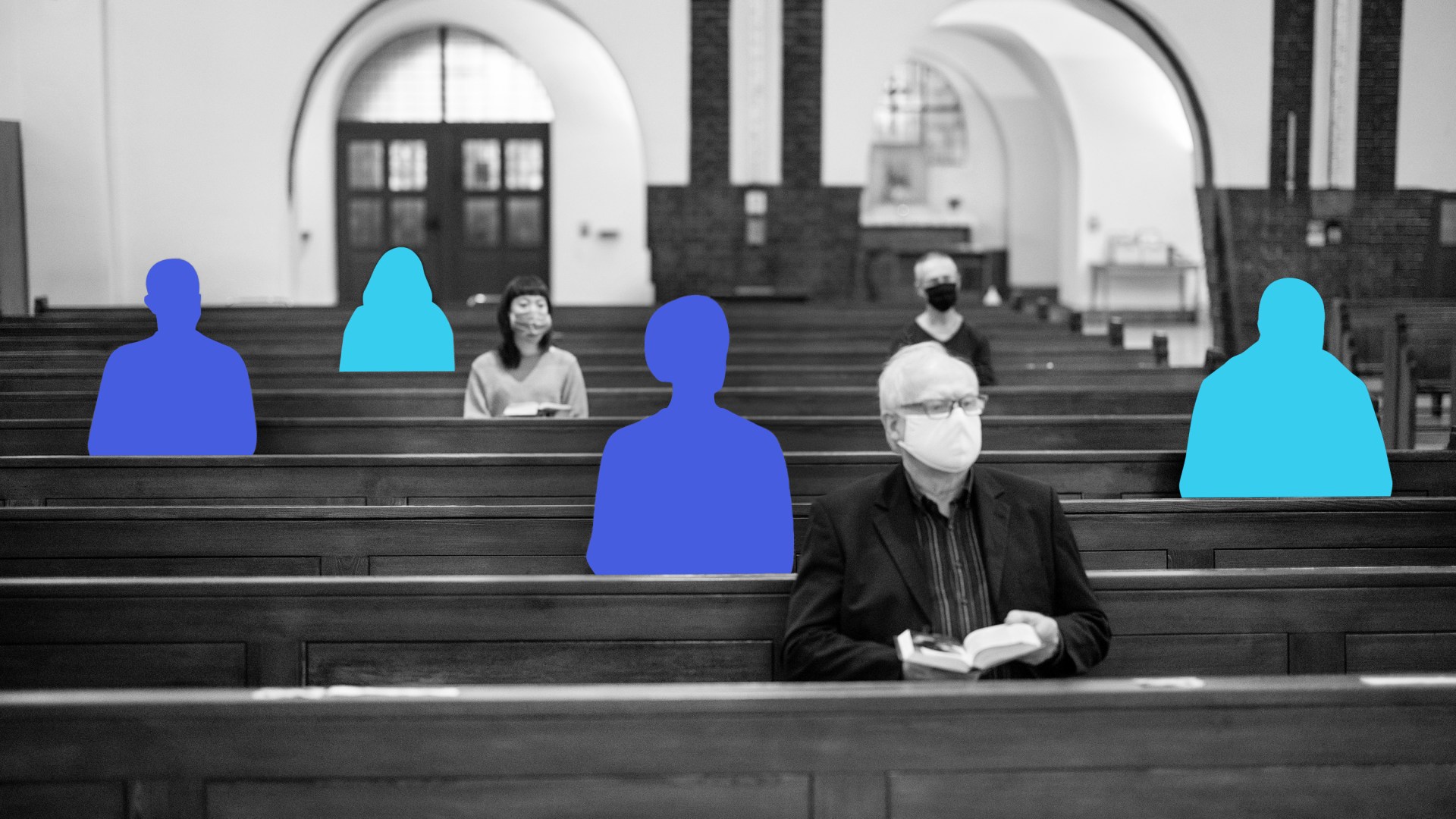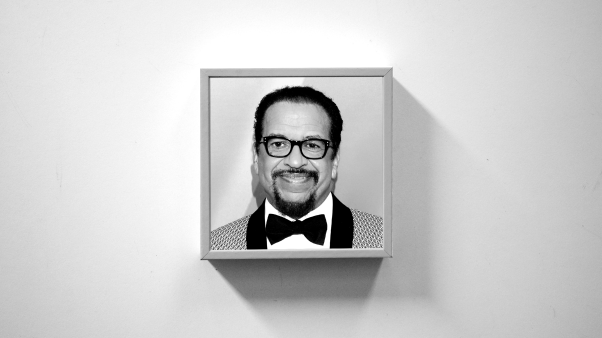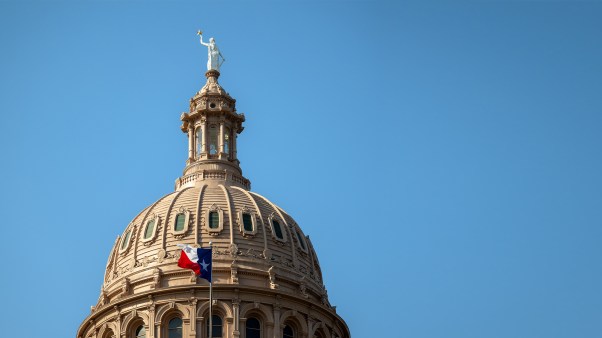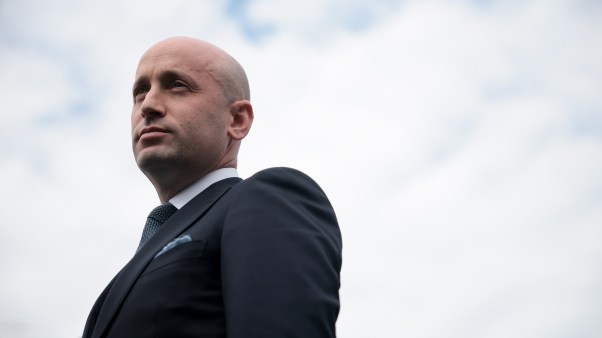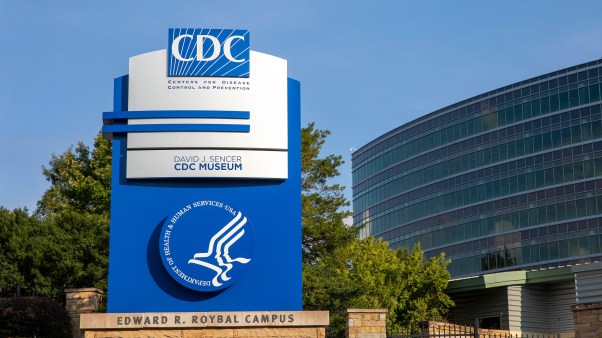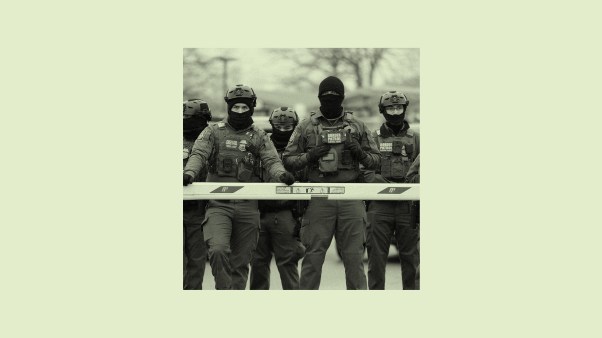During his 21 years as lead pastor of Grace Church in Greenville, North Carolina, Mike Meshaw has seen many people come and go in the transient area that is home to East Carolina University.
Before COVID-19 shut things down in March 2020, the independent evangelical church averaged about 220 people a week. Almost two years after the church briefly suspended in-person services because of COVID-19, he says they are averaging about 150 people a week.
“Most of the people who are not attending [services] are afraid,” he told us. “They are uncomfortable being around crowds.”
The church voluntarily halted in-person worship early in the pandemic, but it was not long before the leadership began hearing from members who missed their church family. “More than 50 percent of our church pushed us to reopen,” Meshaw noted.
As soon as possible, they reopened—and sooner than other churches in the area. That decision turned out to be a positive thing for the church.
“Our people still take precautions, social distancing, and masks—voluntarily,” Pastor Meshaw stated, including canceling a service when necessary. “But we stay open.”
While the church has fared well, the pastor is concerned about the impact of the ongoing pandemic on his congregation, especially during this recent surge in cases.
“One positive test and you put the information out there, and the fear multiplies into a monster, and people get shaken by it,” he said. “My concern is this wear and tear on people’s emotions. How long will they be able to sustain that before they just get frustrated? Some have.”
Other churches have had to deal with declines in attendance and tensions in the congregation over safety protocols.
Wade Bradshaw is the lead pastor of a large PCA church in Charlottesville, Virginia, which began livestreaming services in March 2020 and reopened for in-person worship last fall.
“There was a Zoom fatigue that set in with streaming,” he acknowledged, adding that the church has experienced “significant, discouraging tension over masking.” He explained that “many doctors attend the church and advise us to be conservative. But an element of the congregation is angered by the mask-mandated position.”
Overall, Bradshaw said church “attendance has not recovered to pre-COVID levels,” but, he added, “it is very hard to prognosticate on what long-term effects the pandemic will have.”
Some recent research offers insight into that question.
In June 2021, the Associated Press broke a story that many houses of worship in the US had shuttered forever because of the pandemic.
According to data collected in April and May 2020 by Barna Group, one in three practicing Christians dropped out of church completely at the beginning of COVID-19. Moreover, church membership in the US dropped below 50 percent for the first time in 2020, according to Gallup data dating back to 1940.
This year, a new Institute for Family Studies (IFS) analysis—using the American Family Survey—sheds further light on how religious attendance has declined significantly over the past two years.
The share of regular churchgoers is down by 6 percent, from 34 percent in 2019 to 28 percent in 2021. (It’s worth noting that the terms “church”, “religious services” and “house of worship” are used interchangeably.) Meanwhile, the share of secular Americans who have never or seldom attended religious services increased by 7 percent.
The American Family Survey measured religious service attendance as: “Aside from wedding and funerals, how often do you attend religious services?” (We don’t know whether respondents’ answers included online church attendance as part of their religious service attendance.)
The decline in religious attendance varies by a few demographics. Americans who are younger or older are more likely than those in the middle age groups to have experienced a drop in attendance. It is also more pronounced among married adults without children under age 18. Some 30 percent of married adults without young children attended religious services regularly in 2021, down from 40 percent in 2019.
On the other hand, ideology does not appear to be linked to the decline. Conservatives are more likely than moderates and liberals to attend religious services in the first place, but the decline in attendance is similar in all three groups. Likewise, there are no significant differences by income.
That’s not the case when it comes to race. According to the data, Black Americans are more likely than others to have experienced a sharp decline in church attendance.
In 2019, 45 percent of Black Americans attended religious service regularly. But by 2021, the share dropped to 30 percent, a difference of 15 percent. The decline in other racial/ethnical groups is between 5 to 6 percent.
We spoke to an African American pastor of a 2,000-member evangelical church in Raleigh, North Carolina, that has managed to beat the pandemic odds. The Upper Room Church of God in Christ just celebrated its 86th week of live worship since going online for a seven-week stretch nearly two years ago.
“One of our slogans is ‘We believe worship is worth the risk,’ so we put our safety protocols in place,” the senior pastor, Bishop Patrick L. Wooden, Sr. explained. This includes mandatory temperature checks, socially distanced seating, and two worship services to help space people out. “We have fared well, and the Lord has spared us,” he added.
Although the church has not experienced a big decline in attendance, some of its members have not returned to in person worship yet—either due to sickness, the compromised health of a family member, or just not being comfortable coming back yet. But he says most of the congregation still wants to gather in person.
“I’m telling you, they have come out!” Wooden said, noting the church has even had visitors travel from other states to worship with them “just to be in a live church service.”
Still, he is concerned about the decline in church attendance nationwide, which he attributes, in part, to many churches closing their doors to in-person worship.
“I am somewhat disappointed with how many are responding to this particular hour,” he said. “We’ve begun to justify closing our churches and going online. If you think that church attendance is down now, what do you think is going to happen as these same people hear ministers say that attendance is not necessary?” he asked. “Just sit there in the comfort of your home, and stream us, and that’s the same? I don’t think we can survive that kind of a thing.”
As more COVID-19 vaccines and treatments become available, the burning question is whether there will be a rebound in church attendance after the pandemic finally passes. It is hard to predict, but previous research on how the 2007–2009 Great Recession affected religious attendance may shed some light.
At the time, many people believed the economic crisis would lead to higher levels of church attendance. However, data shows there has been no such increase since the Great Recession. Research also suggests the financial crisis did not have any clear impact on the levels of religious attendance in European countries, either.
“I think some people look at [the pandemic decline in church attendance] as the church being purified of people who are just uncommitted, rolling over into the rise of the ‘Nones,’” Meshaw said. “But for our church, that has been a low number.” He believes most people who haven’t come back are just not comfortable enough to attend in person yet, but he’s been reassured by many others who continue to show up on Sunday.
It is possible that some empty pews may be replaced by online worshipers, but there is no available data to support this. Moreover, a lack of in-person interaction could weaken the social bonds within churches as the pandemic prolongs.
As we know, religious service attendance is not only linked to having a better social support network, but also to several public health benefits—such as less depression, lower suicide rates, and less drug and alcohol overdoses. Online services, with people isolated at home, are unlikely to offer the same level of benefits.
There are also emotional costs for people who practice religion but no longer attend services. According to the Barna survey, respondents who stopped attending church during COVID-19 were more likely to feel insecure and anxious, compared to practicing Christians who didn’t stop attending services in person.
As Tyler VanderWeele and Brendan Case pointed out in a recent CT article, “Empty pews are an American public health crisis.” And this crisis includes the health of the nuclear family. That’s because Americans who attend religious services frequently are more likely to be married and have children.
Coming out of the COVID-19 pandemic, religious Americans are also more likely than nonreligious Americans to have a stronger desire for marriage and children. So a decline in religious service attendance has the potential to negatively affect not only public health but also family stability and population growth.
“I believe that the reason we have tremendous increase in suicides, depression, and mental problems is because the House of God is closed,” Wooden said. He believes the solution to the decline in church attendance is simple: more churches should get back to in-person fellowship, safely.
Pastor Meshaw of Grace Church in Greenville, NC emphasized that the pandemic has increased the need for pastoral care ministry.
He said pastors need to work harder than ever to keep in touch with people who cannot attend a church service—whether through social media, email, phone calls, or visiting in person when possible, especially for the elderly who have been hit hardest by the isolation.
At the end of the day, however, Meshaw is not letting the pandemic discourage him about the future of the church.
“If anything,” he said, “I’m more motivated than ever to shepherd our people through this to the other side.”
Wendy Wang is director of research at the Institute for Family Studies and a former senior researcher at Pew Research Center.
Alysse ElHage is the editor of the Institute for Family Studies blog. She formerly worked for 17 years as a writer and researcher for the North Carolina Family Policy Council.

